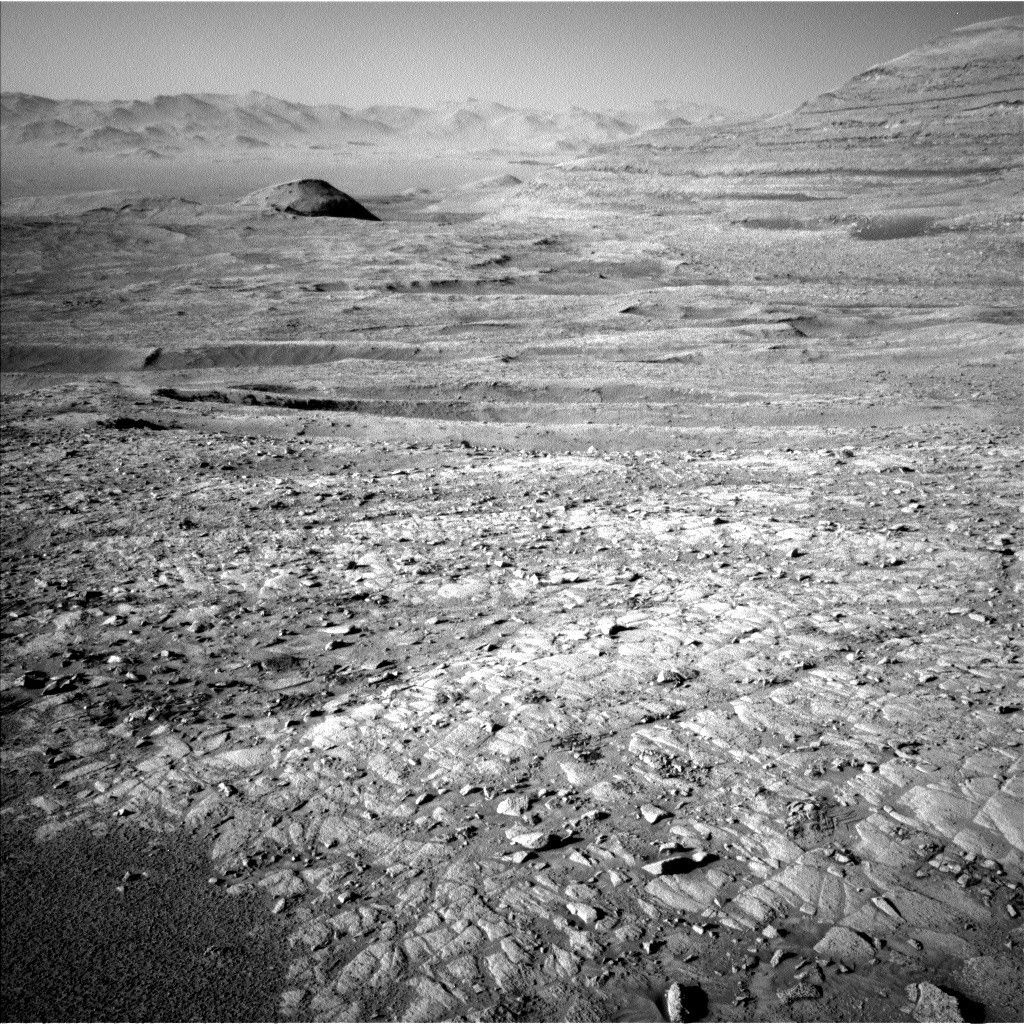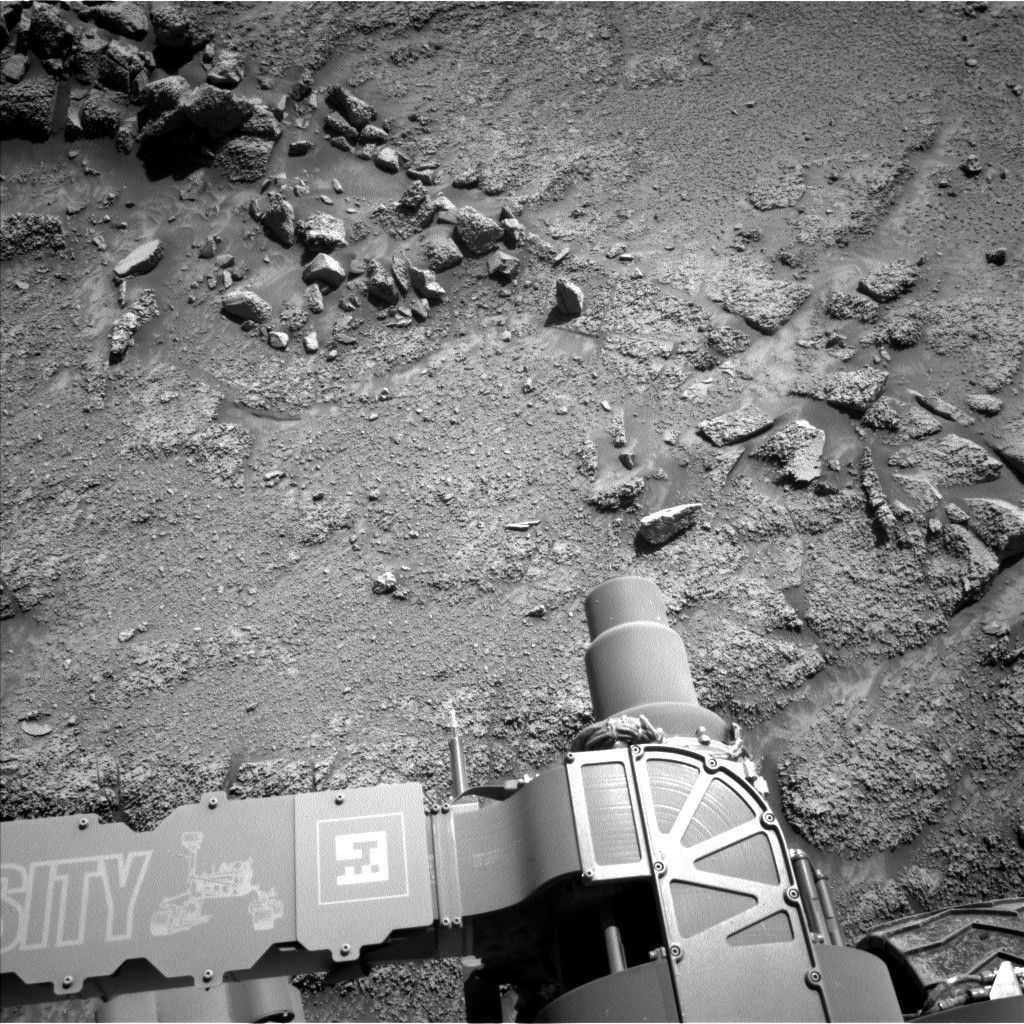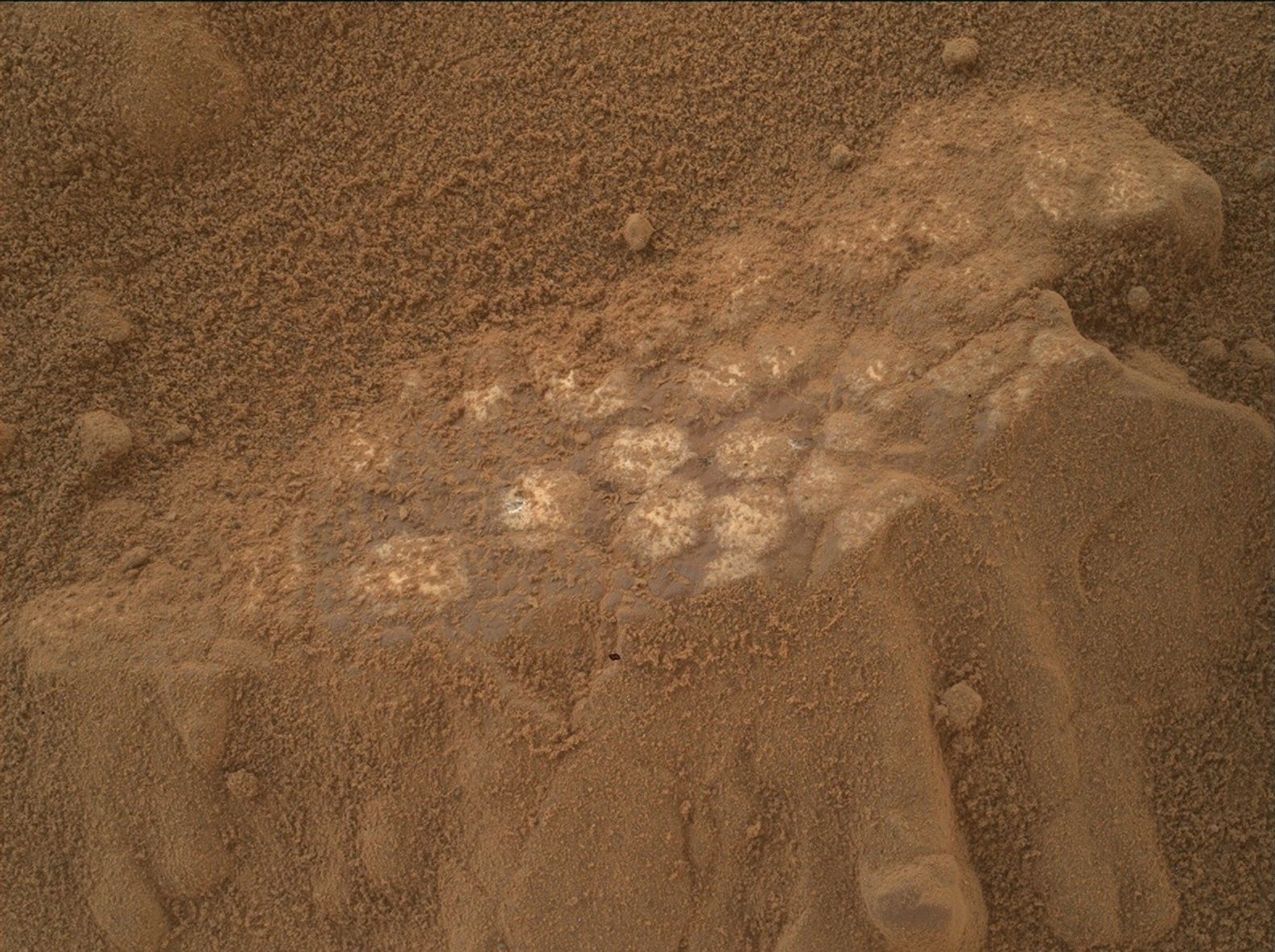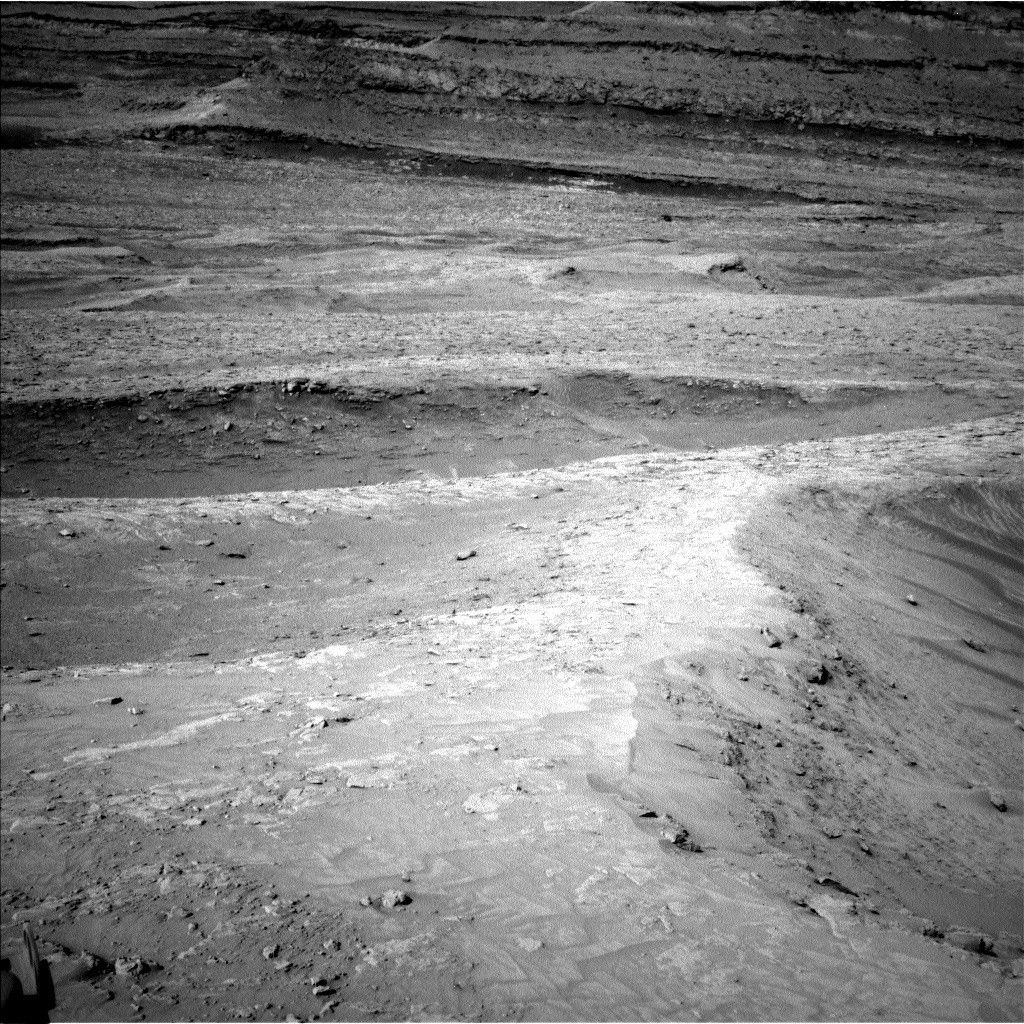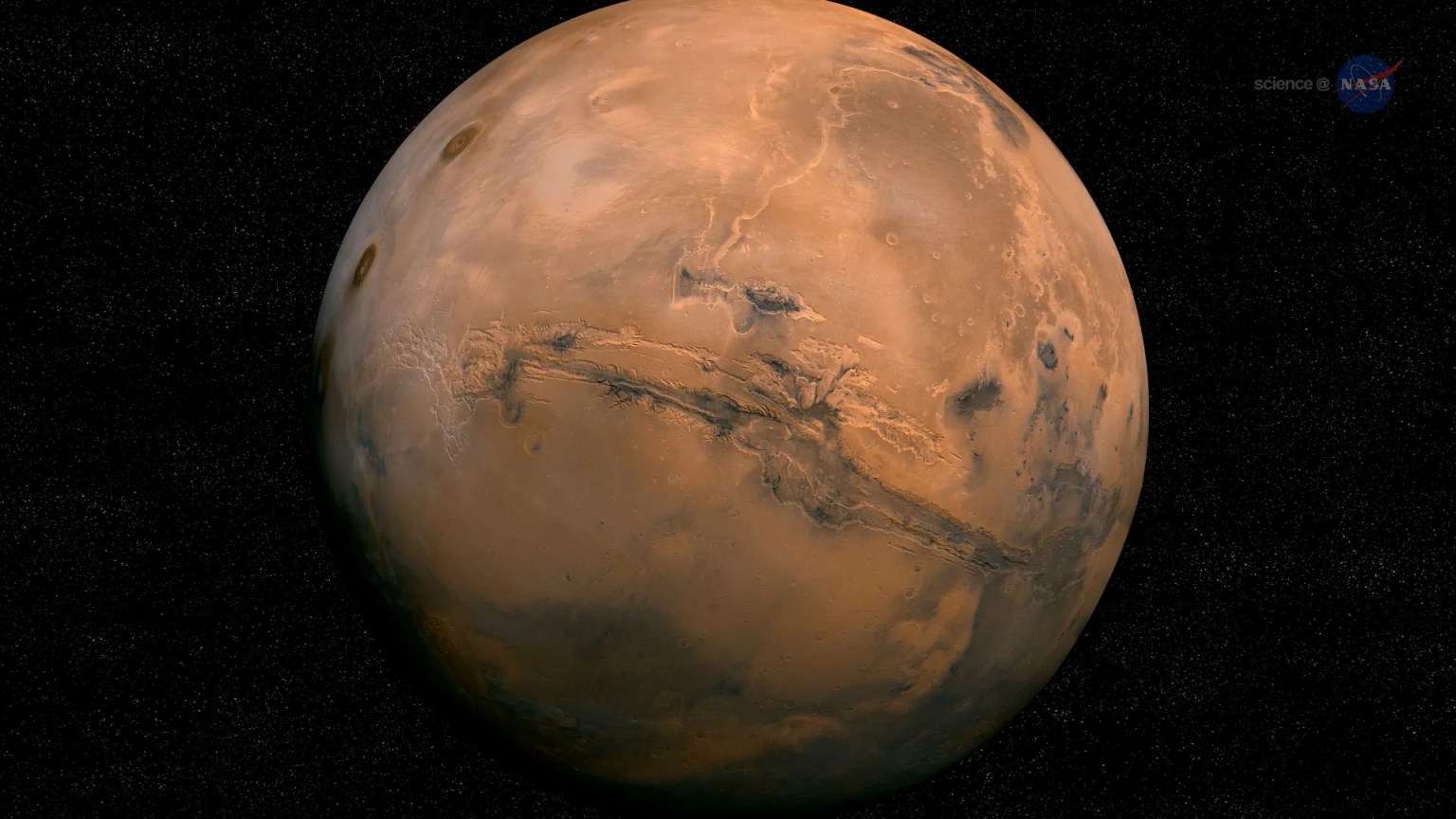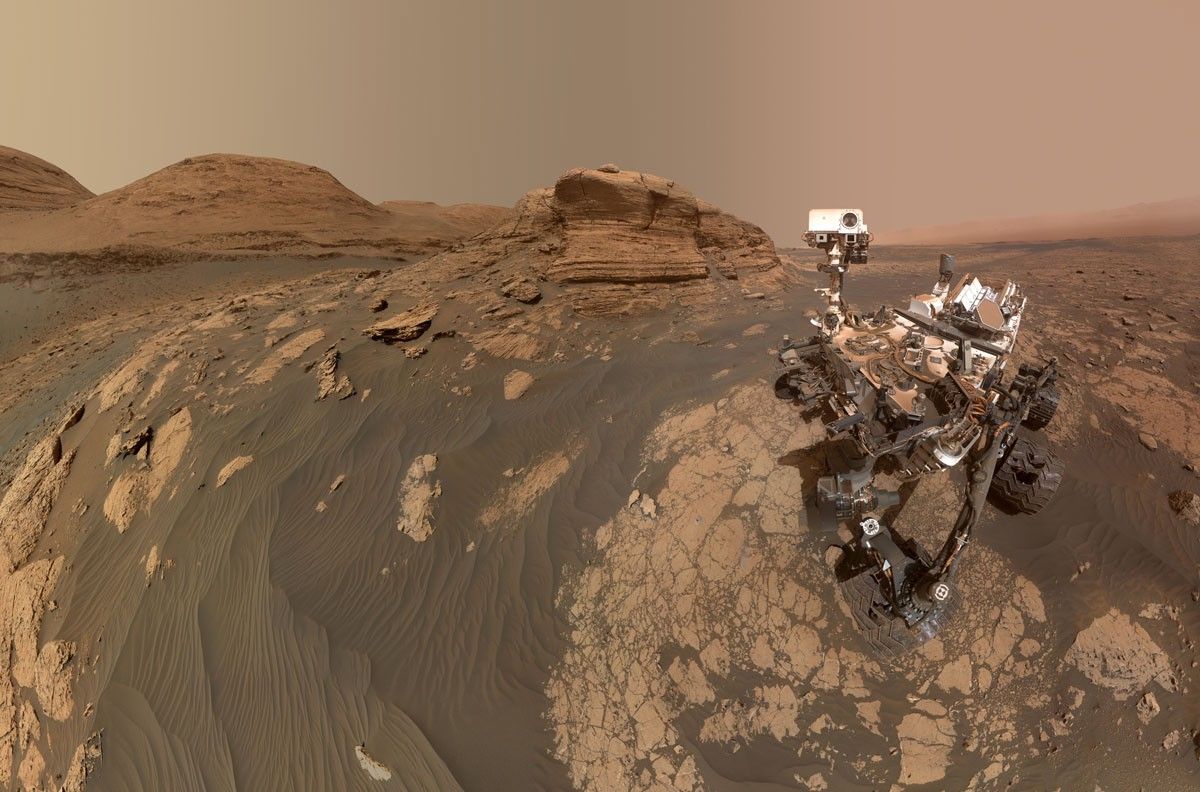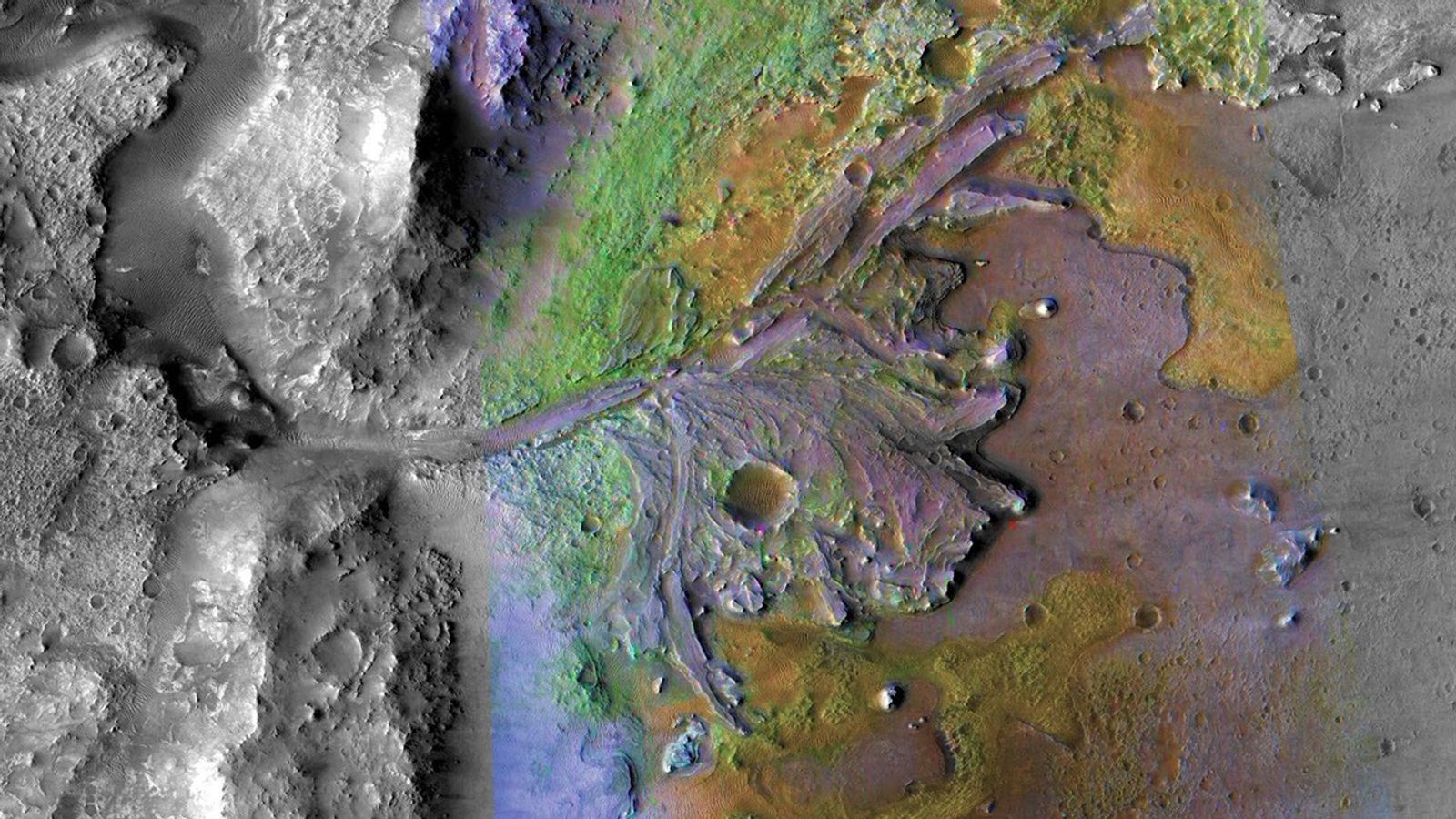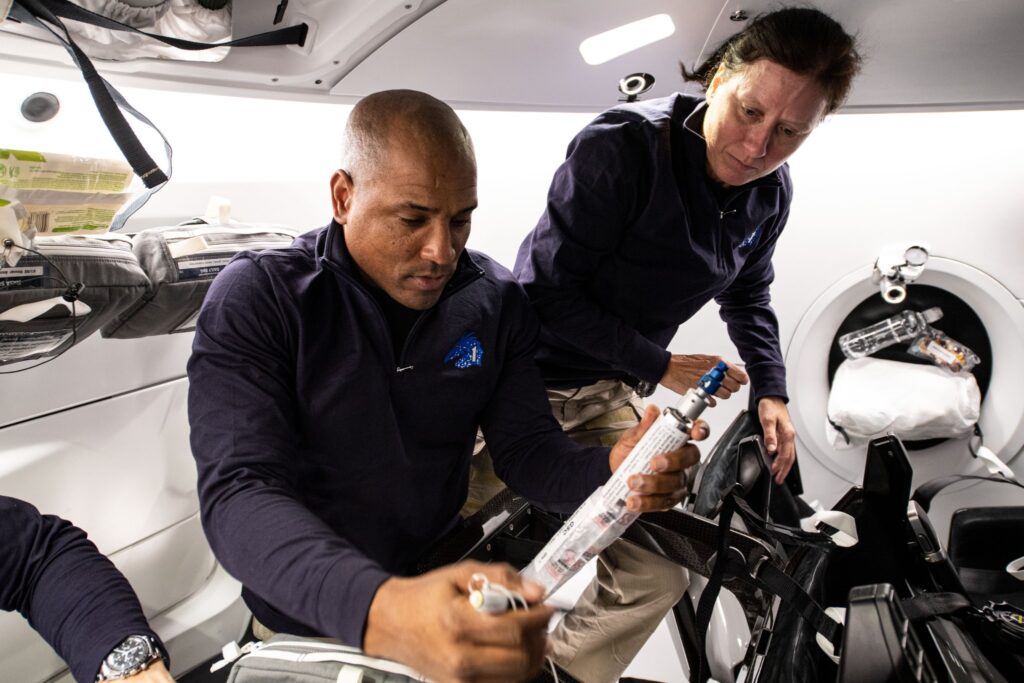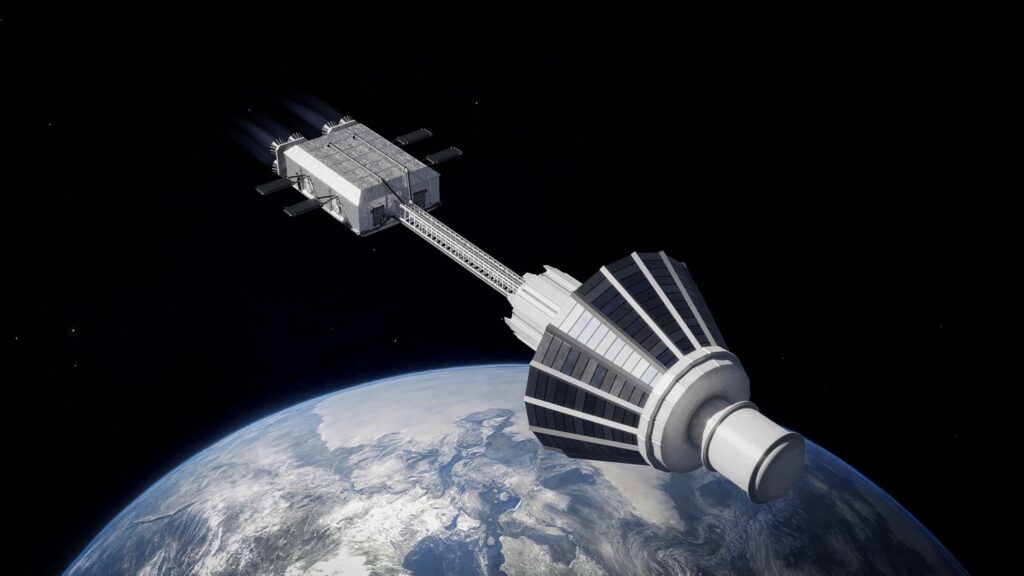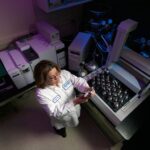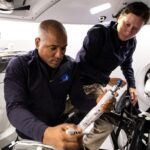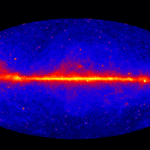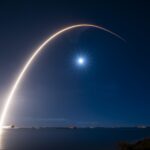Now Reading: Curiosity Blog, Sols 4631-4633: Radiant Ridge Revolution
-
01
Curiosity Blog, Sols 4631-4633: Radiant Ridge Revolution
Curiosity Blog, Sols 4631-4633: Radiant Ridge Revolution

2 min read
Curiosity Blog, Sols 4631-4633: Radiant Ridge Revolution
Written by Remington Free, Operations Systems Engineer at NASA’s Jet Propulsion Laboratory
Earth planning date: Friday, Aug. 15, 2025
Today we uplinked a three-sol weekend plan with lots of exciting activities — to support both the science and engineering teams!
While usually our science activities take front and center stage, we often also do engineering maintenance activities as well to maintain the mechanisms and engineering health state of the rover. On Sol 4631, we planned a maintenance activity of our Battery Control Boards (BCBs) which are electronic control boards attached to the rover’s batteries and are what let us interact with the batteries as needed. This maintenance is done periodically to correct for any time drift on the BCBs, so we get as accurate of data as possible.
On this sol, we also did a dump of all of our parameters — these are essentially variables set onboard the rover which serve as inputs to a variety of functions. Occasionally we send a list of all these variables back down to the ground so we can verify they match as expected. We don’t want to have set a value and then forget about it!
We, of course, also did science activities on this sol. After completing our engineering activities, we started off with some remote science; this included Mastcam imaging and ChemCam measurements of several interesting targets. These were chosen in order to assess variability within the “Cerro Paranal” ridge within view, and to document any layering or fractures in the rock. We then completed several arm activities in order to get more information on these targets through the use of our APXS spectrometer.
On Sol 4632, we planned some remote atmospheric science, including a Navcam dust-devil survey, a Mastcam tau (measurement of the atmospheric opacity), APXS atmospheric observations, and more imaging of some of the ridge targets we looked at in the previous sol.
On Sol 4633, we continued with more science imaging, including a horizon movie using Navcam and a dust-devil movie, before proceeding into our drive. We planned a drive of about 19 meters (about 62 feet) to the south, along the eastern edge of Cerro Paranal. After the drive, it is then standard for us to take new imaging of our new location. We’re excited to get these science images back and to hear how the drive went when the team comes back on Monday!
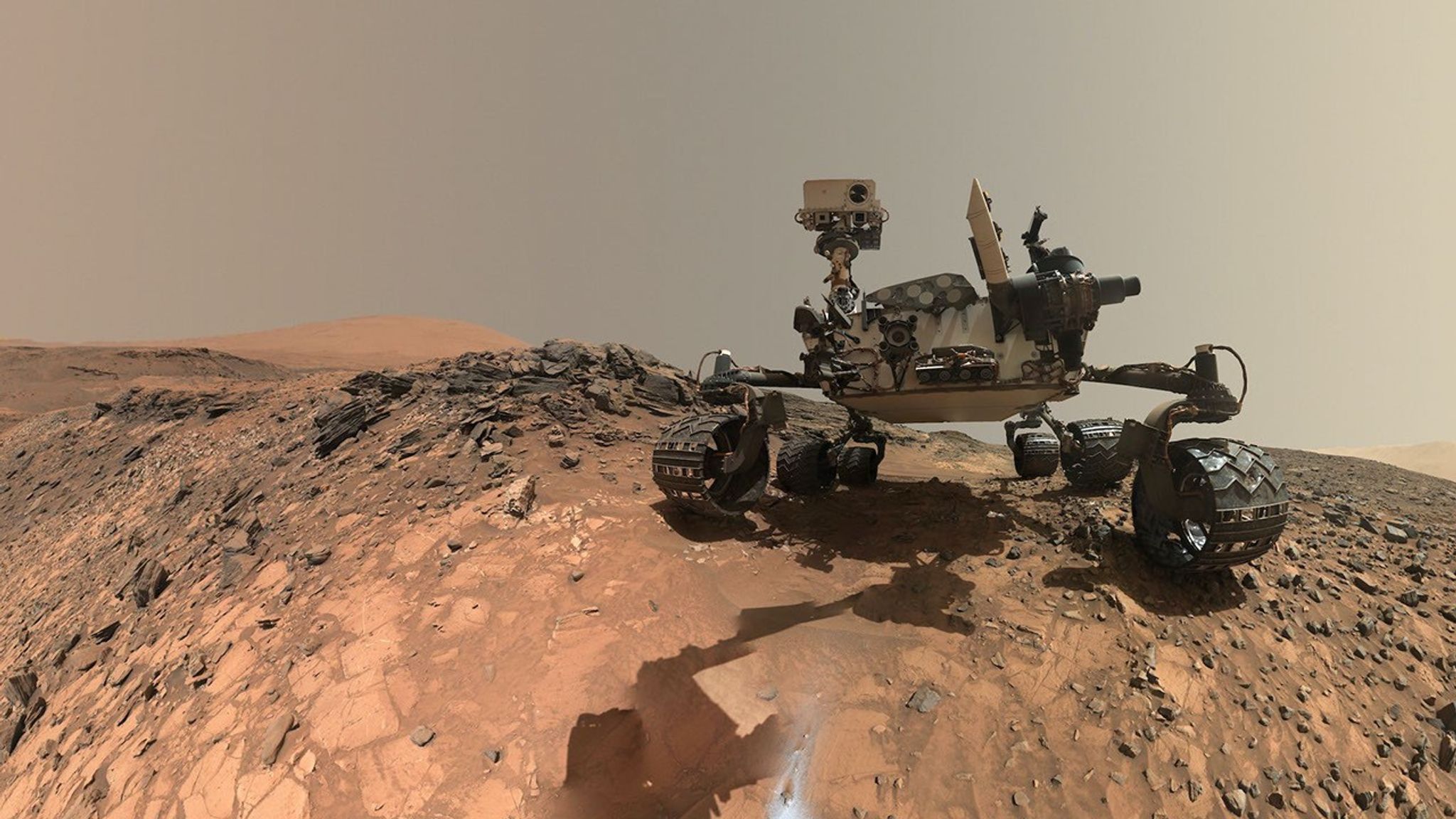
Share
Details
Related Terms
Stay Informed With the Latest & Most Important News
Previous Post
Next Post
-
 012024 in Review: Highlights from NASA in Silicon Valley
012024 in Review: Highlights from NASA in Silicon Valley -
 02Panasonic Leica Summilux DG 15mm f/1.7 ASPH review
02Panasonic Leica Summilux DG 15mm f/1.7 ASPH review -
 03How New NASA, India Earth Satellite NISAR Will See Earth
03How New NASA, India Earth Satellite NISAR Will See Earth -
 04And Thus Begins A New Year For Life On Earth
04And Thus Begins A New Year For Life On Earth -
 05Astronomy Activation Ambassadors: A New Era
05Astronomy Activation Ambassadors: A New Era -
06SpaceX launch surge helps set new global launch record in 2024
-
 07Space Force plans new ‘Futures Command’ amid pressure to speed up modernization
07Space Force plans new ‘Futures Command’ amid pressure to speed up modernization


